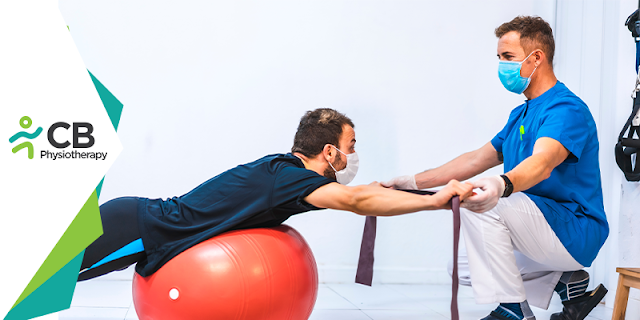Celebrating World Physiotherapy Day 2021: Managing Long COVID Symptoms with Physical Therapy
Individuals who have suffered from COVID-19 can experience prolonged symptoms lasting for weeks to months even after the infection has gone, ultimately resulting in "LONG COVID". One of the possibilities for LONG COVID is the overdrive of one’s immune system towards the virus resulting in harming one’s own tissues. This usually happens with people having a very strong immune system. Another possibility is the presence of the fragments of the virus in the body, usually in the dormant form, even after the recovery from the deadly infection, thus giving way to ''LONG COVID''. For the recovery from the symptoms and impairments of "Long COVID", multi-disciplinary approach assessment and management is essential. Rehabilitation for individuals recovered from COVID-19 requires the consultation of a physiotherapist, who makes sure that the exercises are done with care to minimize the risk of overexertion. He also ensures the exercise programs are restorative and do not make an individual's symptoms worse. In this blog, we will discuss the physiotherapist's treatment for "LONG COVID" patients.
Symptoms of long COVID:
The severity of symptoms varies and many individuals have been left unable to perform strenuous tasks. The symptoms include fatigue, post-exertional symptom exacerbation (PESE), insomnia, breathlessness, chest pain, heart palpitations, dizziness, muscle and joint pain, depression and anxiety, earaches, diarrhea, stomach aches, a high temperature, cough, sore throat, changes to sense of smell, or taste, problems with memory, and many more.
Physiotherapy treatment:
Assessment:
The physiotherapist carries out a detailed assessment and takes various tests to find the causes of symptoms to plan out a rehabilitation program.
Depending on the symptoms of each individual the physiotherapist designs a tailored rehabilitation program. The therapist uses safe, effective techniques and interventions to enhance the recovery process and increase functionality. During exercising, utmost care is taken to prevent oxygen desaturation, hyperventilation, and breathing pattern disorders.
Pacing:
Pacing is a self-management technique of breaking up the activity into smaller tasks, with rest intervals to make the activity less intense, this is to avoid post-exertional symptom exacerbation (PESE). The physiotherapist teaches the individual to monitor the heart rate and advice to do activities with less exertion and not to keep doing until one feels tired which in turn can worsen their symptoms.
Breathing exercises:
While breathing the body has a sufficient supply of oxygen, thus the muscles have more energy stored that increases the lung endurance. Breathing exercises or Chest Physiotherapy steadily increase lung capacity and also increases the lungs' ability to maintain a sufficient supply of oxygen over time.
Diaphragmatic breathing:
When the diaphragm is functioning effectively as the primary muscle of inspiration, ventilation is efficient and the oxygen consumption of the muscles is very low during quiet relaxed breathing. Diaphragmatic breathing, help decrease the work of breathing, improves the efficiency of ventilation, increases the excursion of the diaphragm, and improves gas exchange
Pursed lip breathing:
Controlled expiration with gentle pursed-lip breathing. This mechanism keeps the airways open by creating backpressure in the airways. Pursed lip breathing increases the tidal volume decreases the respiratory rate and improves exercises tolerance.
Incentive Spirometry:
Incentive spirometry is a technique used for maximal inspiration. It is a form of ventilation training that focuses on sustained maximum inspiration. The spirometer provides visual or auditory feedback when the patient inhales and breathes in as deeply as possible
Lateral costal expansion:
The lateral costal expansion focuses on the movement of this portion of the lower rib cage (bilaterally or unilaterally) and is thought to facilitate diaphragmatic excursion.
High-intensity exercises are recommended after the symptoms improve to maintain flexibility and endurance e.g. core strengthening exercise, increase the walk time, and increase the activity levels gradually. During activities don't forget to take a rest with no mental stress.
